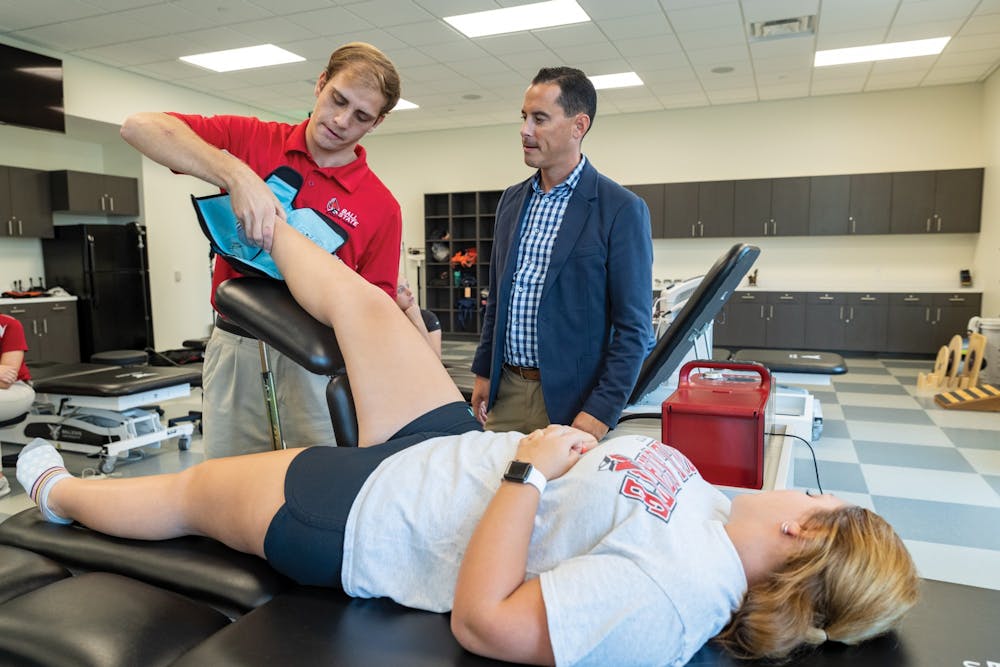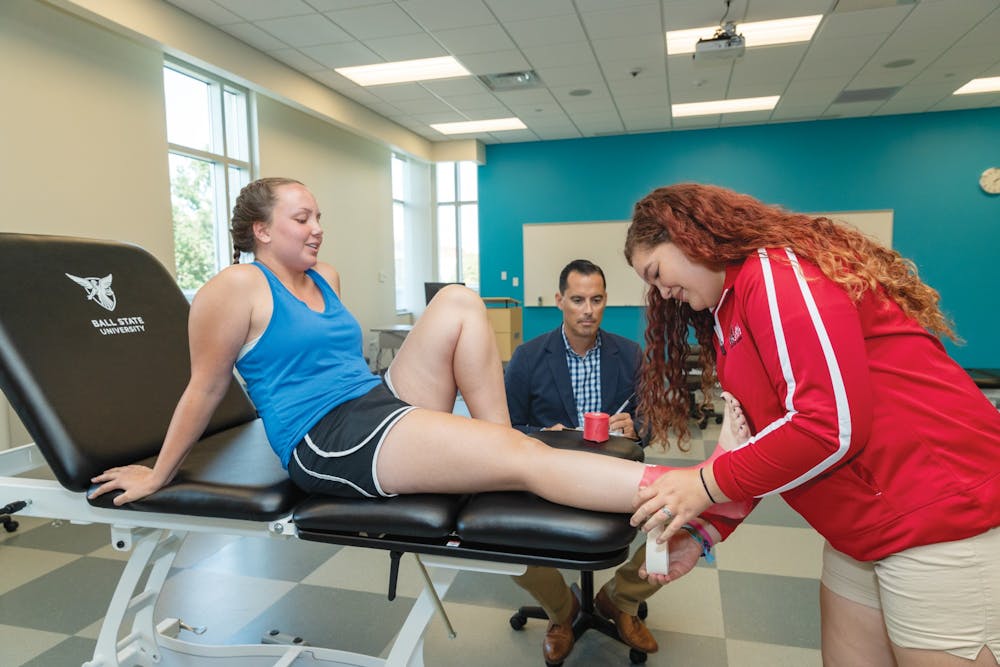Dorice Hankemeier, clinical education coordinator at Ball State, said there are several items around the house to use as exercise equipment.
For exercises that require weight, Hankemeier recommends:
- Soup cans
- Laundry Detergent containers
- Milk jugs with items inside them
For exercises that work on range of motion, particularly in the shoulders, she recommends:
- Brooms
- Mops
- Yardsticks
Spencer Tonner, senior athletic training major at Ball State, listed a few rehabilitation workouts that can be done around the house using furniture:
- The arm of a couch can be used to stretch the quad muscles instead of performing squats.
- Stairways can be used to perform step-ups, where you slowly step up a step and then slowly step down. Steps can also be used to perform heel slides, where you slowly slide a heel off of the step you are standing on and then slide it back forward.
For Spencer Tonner, the value of athletic trainers and athletic training shouldn’t be understated during times like these.
“Athletic trainers are still playing a vital role in the healthcare system — being able to use their … skills to evaluate and screen people and really protect other people from getting it,” the Ball State senior athletic training major said.
Since Ball State has canceled in-person classes, Tonner said, athletic training majors will be making the switch to telemedicine clinicals, in partnership with the University of Indianapolis, through the Zoom video conferencing platform.
One student will act as a patient while the other student will act as the athletic trainer — evaluating the patient and completing necessary paperwork, he said. The students are given case files they study going into the clinical so they can understand the patient’s needs.
Students were also given a take-home package, Tonner said, that helps students understand their class participation over Zoom, which includes material such as evaluations, program designs and how students should act while portraying patients.
“We've run simulations, in person and years prior, for our general medicine class,” he said. “This isn't much different than what we've already done in person. If I didn't have this prior experience, this will be a steep learning curve.”
Dorice Hankemeier, clinical education coordinator at Ball State, said the telemedicine students were a “little unsure” moving away from in-person clinicals and into telemedicine.
“It was something we had planned to start doing with them next year, and this kind of accelerated that process a little bit more,” Hankemeier said.
Lately, she said, professionals and educators have been showing more interest in the field of telemedicine.
According to the American Hospital Association, in 2017, 76 percent of U.S. hospitals connected with patients and consulting practitioners through the use of video and other technology.
“It could be really good for the future, not just in a pandemic situation, but it could be really good for our students to be able to incorporate telemedicine into their practice,” Hankemeier said.
While there have been drawbacks to not being able to use all the equipment available at Ball State’s clinicals, she said, telemedicine opens up opportunities for students to get creative with how they treat their patients.
“We're also encouraging them to look around their homes and think about different ways of doing things, creating rehab tools that they can find at home,” Hankemeier said. “Obviously, if we're ever in a situation where they're doing more telemedicine, they're going to have to use what the patient has available to them.”
Tonner also said this offers a good learning opportunity for athletic training students because the places they work at may not always have the best equipment available.
“We're not always going to have top-of-the-line rehab or modalities equipment like what we do for football [at Ball State], for example,” he said. “It's nice to learn how to use furniture in the house, or stair steps or whatever else you can find in the house to use to do your exercises.”

Overall, Tonner said the athletic training classes have been alright because the class he is taking is more discussion-based. However, he said underclassmen have been struggling because they are in more hands-on classes, such as rehabilitation and therapeutic exercises.
If he were to give advice to those underclassmen, he said, he would tell them to make sure they understand the class material, and if they don’t, they should reach out to a professor or upperclassmen because the skills they learn early on will carry forward for the rest of their education.
“Students really need to do things the right way and the best way that they can due to the circumstances,” Tonner said. “If they find an easy way out, they're not going to perform well later.”
It is a frustrating time, Hankemeier said, and professors and students have had to do a “complete 180” on how they think about clinical education, but this opportunity will “set our students up well” and teach students skills they may not have already had.
“Try to look at the positives and the bright side in a difficult situation,” she said.
Contact Charles Melton with comments at cwmelton@bsu.edu or on Twitter @Cmelton144.





